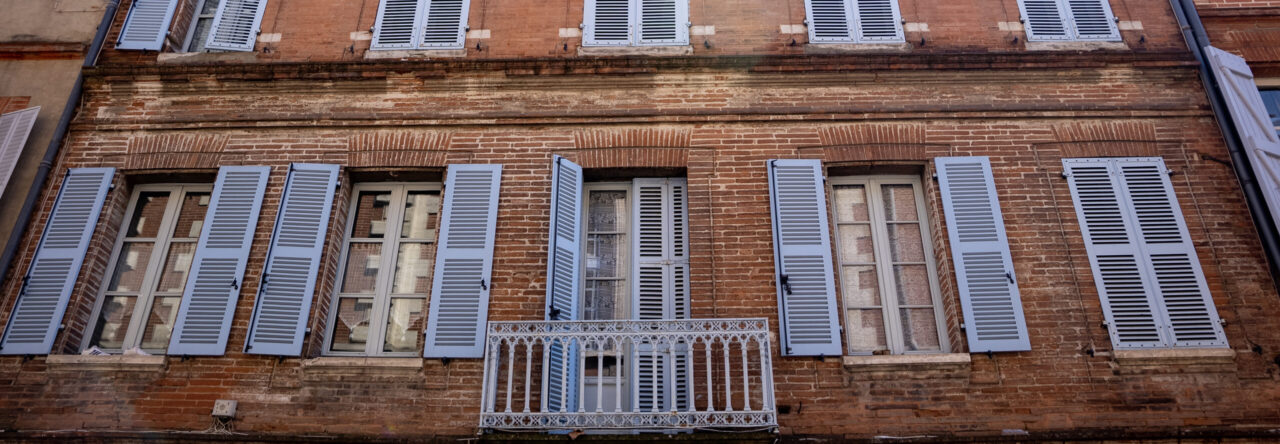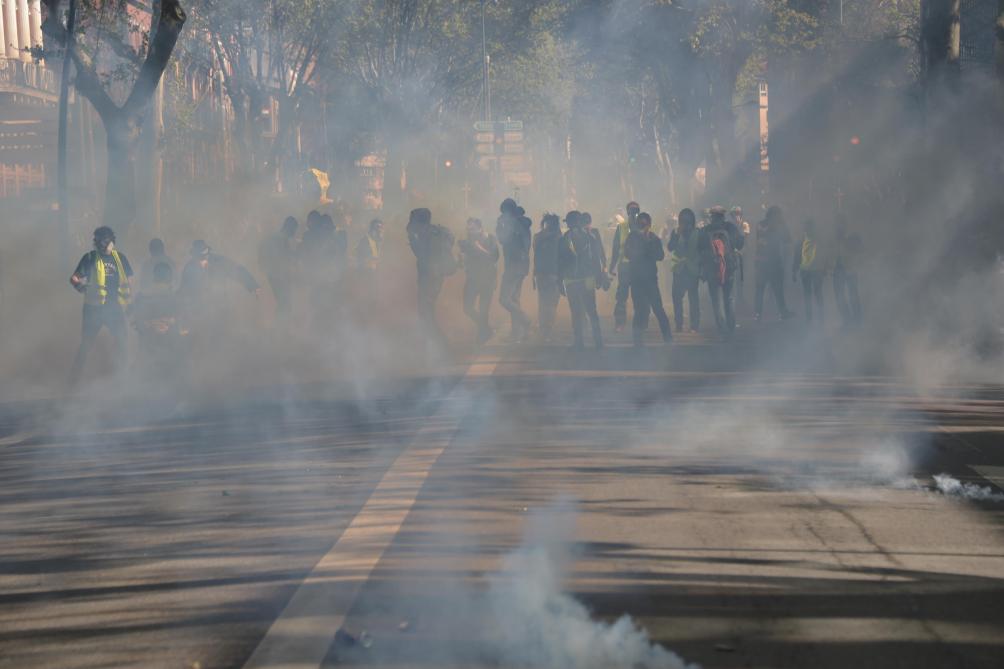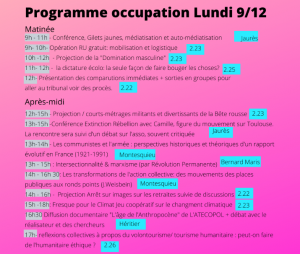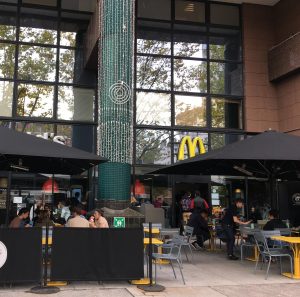Written by Conor Gourley and Katie Zhang, March 27th, 2020
Everything still seems unreal, only a week ago we were together in in Toulouse, now we are all at home in our different spots throughout the world. We certainly did not imagine this ending to the program – it was so sudden that we did not have the time to say real goodbyes to our hosts nor to friends. As our program was suspended because of the virus we decided to write an article about the different reactions to the virus by our different countries as a way to reflect on our experiences over the last weeks.
In the United States:
During my re-adaptation to life in Pennsylvania, I could see with my own eyes the American response to the conoravirus pandemic and the way many Americans were reacting. The day after I left France, Monday, March 16th, Macron issued the ‘shelter in place’ order to try to slow down the spread of the virus. Exactly one week later, on March 23rd, Tom Wolf, the governor of Pennsylvania, gave the same order for my county as well as six others. Even though it was a big step to reduce the infection rate, accordi ng to what I have seen in the reaction of other Americans, it may not be sufficient. Almost everyone with whom I spoke seemed to share the same view that the current government actions intended to help the country are not enough and it is not taken seriously. At the same time, many barely pay attention to government restrictions; especially young people who are less at risk and do not apply social distancing. Many friends have asked to meet up, if I could get to Boston to the Tufts campus to see them, or if I could go rock climbing in Kentucky. Of course I would like to go, but it is surprising to hear people who are disregarding barriers that were created as protections for our communities.
ng to what I have seen in the reaction of other Americans, it may not be sufficient. Almost everyone with whom I spoke seemed to share the same view that the current government actions intended to help the country are not enough and it is not taken seriously. At the same time, many barely pay attention to government restrictions; especially young people who are less at risk and do not apply social distancing. Many friends have asked to meet up, if I could get to Boston to the Tufts campus to see them, or if I could go rock climbing in Kentucky. Of course I would like to go, but it is surprising to hear people who are disregarding barriers that were created as protections for our communities.
When we were in France:
I felt that no one was really nervous about the virus a few days before our departure (March 8-11th). Life went on normally- cafés and bars were full. Even as the number of sick grew by the hundreds per day, people were going out and hanging out together as they did always.  Protests kept up. All the news media sent the message that there should be no panic, COVID-19 was just a bad flu. The president and his wife even went out to see a play to show that all was well. I began to get nervous when things got serious and yet those around me were not at all nervous. I stopped going out as often and avoided public transportation, while others thought I was over-reacting.
Protests kept up. All the news media sent the message that there should be no panic, COVID-19 was just a bad flu. The president and his wife even went out to see a play to show that all was well. I began to get nervous when things got serious and yet those around me were not at all nervous. I stopped going out as often and avoided public transportation, while others thought I was over-reacting.
In China:
I know I was very nervous about the virus because I saw so much information about it from China. I understand how such a situation could become horrible and how the Chinese government treate d the virus differently. For example, my temperature was taken 6 times before I disembarking from the plane. Then, I went through more temperature taking as well as an epidemiological report at the airport. I was not allowed to return home alone, nor could my parents come to fetch me. The airport informed my neighborhood and I was escorted home in an ambulance. I am now in self- quarantine for 14 days. Each day I receive a call from the authorities to check my temperature. Food and other goods are delivered to me.
d the virus differently. For example, my temperature was taken 6 times before I disembarking from the plane. Then, I went through more temperature taking as well as an epidemiological report at the airport. I was not allowed to return home alone, nor could my parents come to fetch me. The airport informed my neighborhood and I was escorted home in an ambulance. I am now in self- quarantine for 14 days. Each day I receive a call from the authorities to check my temperature. Food and other goods are delivered to me.
All during the process, everyone I met wore a mask, at least. However, when I was at the Toulouse airport, I was the only mask wearer. That really bothered me and stressed me out. Therefore I did a bit of research to try to understand different reactions of different people regarding wearing masks. Here’s what I learned — people are already used to wearing masks daily in East Asian countries. In Japan, people began wearing masks to help with allergies, as in China several years ago, against increased air pollution. Yet in Europe and the US, there is a tacit understanding that only sick people wear masks. Additionally, in China everyone is required to wear a mask during the epidemic, while western governments have announ ced that masks are not useful for the greater public, further there are not enough masks for all. Such differences produce an opposite reactions about mask-wearing. It is very difficult to judge who is right or wrong, we need to respect both opinions.
ced that masks are not useful for the greater public, further there are not enough masks for all. Such differences produce an opposite reactions about mask-wearing. It is very difficult to judge who is right or wrong, we need to respect both opinions.
Although it was different in the beginning, the world’s reaction is almost the same: stay home! It is certainly hard to do, but it is the most simple and the most efficient that each of us can do for society in these difficult times. Doctors and nurses are obligated to put themselves in danger from the virus, so what can we can do is to reduce our chances of becoming sick. Everyone has it hard now, but it is important to stay calm and to be grateful for the sacrifices others are making for us. I hope all will be well soon and everyone can emerge safe and sound!




 In the United States, protests are much more common than strikes. But even when there are protests, they are not national such as in France. There are protests for individual causes, and they usually last no more than a day. A good example is the Women’s March. This is a group that holds protests in many big cities around the US every year. The goal is “to harness the political power of diverse women and their communities to create transformative social change” (Women’s March), but not necessarily to make specific changes in law or government. This is more commonly the purpose of protests in the US because the constitution and the law is much harder to change than in France. Our constitution is almost impossible to amend, while in France, they amend the constitution about every two and a half years. This is a simplified explanation for why protest culture is so different in France, and why the protests make change in France.
In the United States, protests are much more common than strikes. But even when there are protests, they are not national such as in France. There are protests for individual causes, and they usually last no more than a day. A good example is the Women’s March. This is a group that holds protests in many big cities around the US every year. The goal is “to harness the political power of diverse women and their communities to create transformative social change” (Women’s March), but not necessarily to make specific changes in law or government. This is more commonly the purpose of protests in the US because the constitution and the law is much harder to change than in France. Our constitution is almost impossible to amend, while in France, they amend the constitution about every two and a half years. This is a simplified explanation for why protest culture is so different in France, and why the protests make change in France.



 However, oddly enough, most of these McDonald’s actually have a small side window where people can order to-go in a drive-thru like feature, but basically replacing the cars with humans. In addition, McDonald’s is not quite everywhere in France as it is in America. The fast-food chain surely exists and is present in large cities, but they are not necessarily in every neighborhood like they usually are in the States. According to Statistica.org, there are only around 1,400 locations in all of France in 2018, which is approximately only 10 percent the amount in the U.S. Moreover, French McDonald’s is not the 24-hour show that is in America: they actually usually close around 1am and open around 8am.
However, oddly enough, most of these McDonald’s actually have a small side window where people can order to-go in a drive-thru like feature, but basically replacing the cars with humans. In addition, McDonald’s is not quite everywhere in France as it is in America. The fast-food chain surely exists and is present in large cities, but they are not necessarily in every neighborhood like they usually are in the States. According to Statistica.org, there are only around 1,400 locations in all of France in 2018, which is approximately only 10 percent the amount in the U.S. Moreover, French McDonald’s is not the 24-hour show that is in America: they actually usually close around 1am and open around 8am. One of the most common memes about American McDonald’s revolves around the theory and fact that their ice cream machine is always broken. Therefore, really the only dessert option rests at a soggy apple McPie. Yet in France, McDonald’s features special items specific to the country such as burgers and sandwiches made with a fresh, warm baguette. You can even finish off your meal with dessert options ranging from five different flavors of macarons to mini tiramisu to the southwestern French specialty, canelé. With menu options like these, I would surely be open to French McDonald’s dining experience.
One of the most common memes about American McDonald’s revolves around the theory and fact that their ice cream machine is always broken. Therefore, really the only dessert option rests at a soggy apple McPie. Yet in France, McDonald’s features special items specific to the country such as burgers and sandwiches made with a fresh, warm baguette. You can even finish off your meal with dessert options ranging from five different flavors of macarons to mini tiramisu to the southwestern French specialty, canelé. With menu options like these, I would surely be open to French McDonald’s dining experience.
 the right to keep and bear arms is protected by the Second Amendment of the Constitution and as a further level of protection, most state constitutions guarantee this right. Given the fact that gun ownership is so ingrained into the foundation of the United States, it is no surprise that this issue is divisive. In terms of possession and ownership of a firearm, the laws vary state by state. Generally accepted laws include the prohibition of firearm sales to convicted felons, domestic abusers, fugitives, addicts of an illegal substance, those who are deemed mentally unstable, veterans who have been dishonorably discharged, and those who have renounced U.S. citizenship. Regarding the regulation of both open and concealed carry of a firearm, laws have changed dramatically since the early 2000’s. In most states, a license is required to carry a handgun and is permitted to qualified applicants, however eleven states still allow concealed carry of a firearm without a permit. This is called “Constitutional carry”. Twenty-six states allow open-carry of handguns without a permit and four states plus Washington D.C. have banned open-carry of handguns.
the right to keep and bear arms is protected by the Second Amendment of the Constitution and as a further level of protection, most state constitutions guarantee this right. Given the fact that gun ownership is so ingrained into the foundation of the United States, it is no surprise that this issue is divisive. In terms of possession and ownership of a firearm, the laws vary state by state. Generally accepted laws include the prohibition of firearm sales to convicted felons, domestic abusers, fugitives, addicts of an illegal substance, those who are deemed mentally unstable, veterans who have been dishonorably discharged, and those who have renounced U.S. citizenship. Regarding the regulation of both open and concealed carry of a firearm, laws have changed dramatically since the early 2000’s. In most states, a license is required to carry a handgun and is permitted to qualified applicants, however eleven states still allow concealed carry of a firearm without a permit. This is called “Constitutional carry”. Twenty-six states allow open-carry of handguns without a permit and four states plus Washington D.C. have banned open-carry of handguns.














